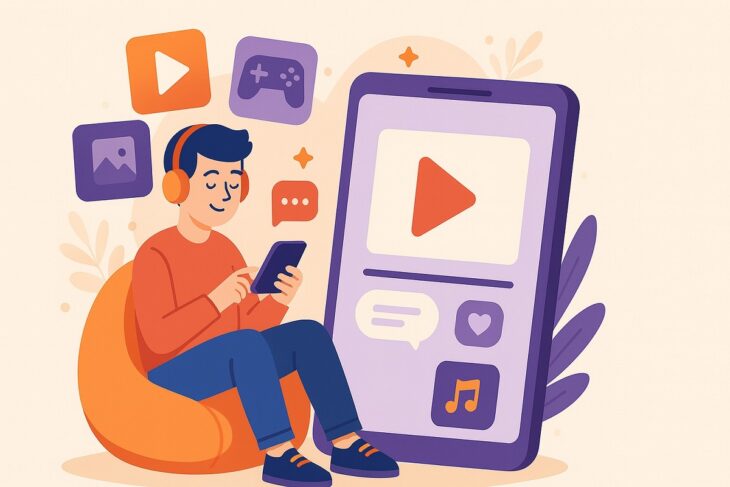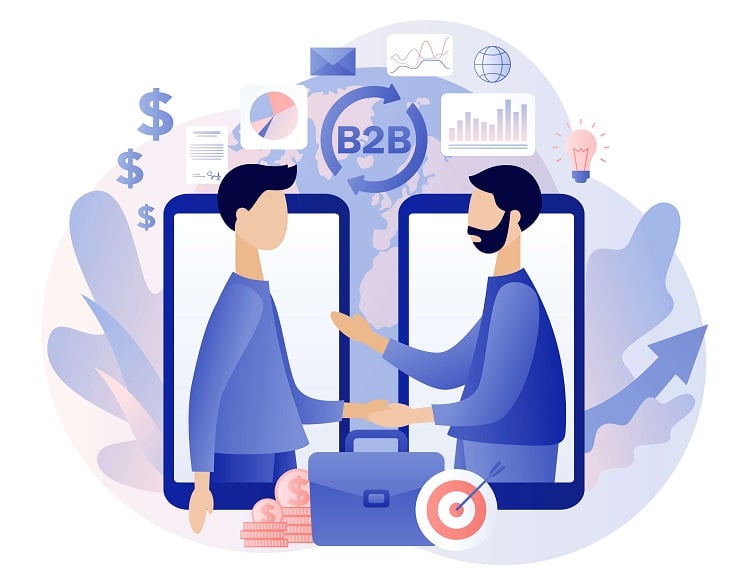Entertainment apps don’t have the luxury of being “useful.” You’re not solving spreadsheets or filing taxes. You’re distracting someone at the airport, entertaining them during dinner, or making sure they don’t delete your app after one mildly boring experience.
The bar? Stupidly high. Because when users open your app, they’ve already got twenty other options screaming for attention. And if your UI makes them think too hard, wait too long, or dig through menus like it’s a ‘90s adventure game, they’re gone. No second chances.
Here’s the playbook that actually works, based on what the heavy-hitters like Netflix, Spotify, TikTok, and Twitch are doing, and what you need to copy if you want to stay on someone’s home screen in 2025.
Table of Contents
Toggle1. Personalized Recommendations
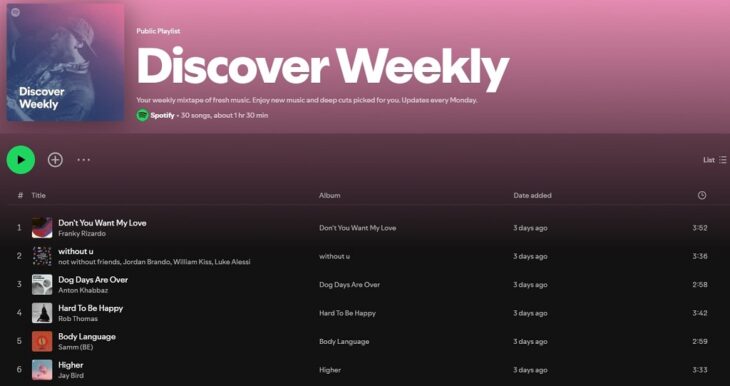
Nobody wants to scroll forever. If your app can serve up content that feels freakishly spot-on, you’re winning.
What it looks like in real life:
- Netflix: 80% of what people watch comes from their recommendation engine.
- Spotify: That “Discover Weekly” playlist isn’t magic – it’s cold, calculating user data.
- YouTube: Your “Watch Next” queue is basically your digital fingerprint.
2. Interactive Content
Passive viewing is for cable. Interactive stories give users control and create a low-key addiction loop.
Prime examples:
- Black Mirror: Bandersnatch on Netflix: You get to choose your own digital doom.
- Choices: Stories You Play: The dating drama genre nobody asked for but everyone plays.
Let’s be real: planes, subways, or grandma’s house are all dead zones. If your app only works with a solid signal, you’re toast.3. Offline Viewing
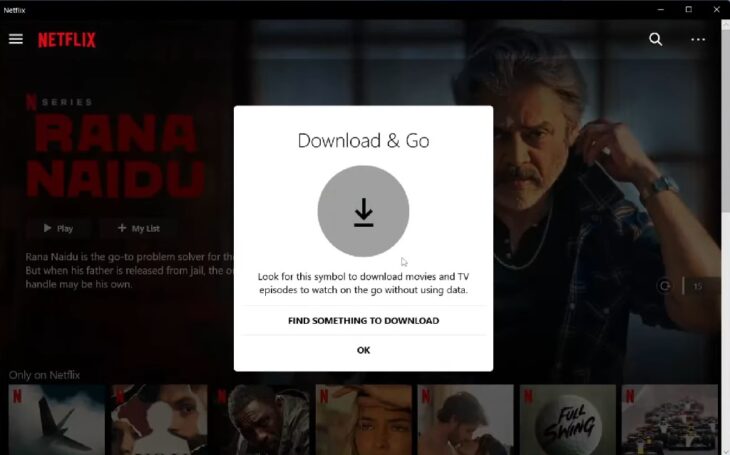
Who nails it:
4. Gamification
Points, levels, leaderboards… it’s the same psychology that makes people chase casino bonuses, but with less regret (usually).
Just like TikTok’s Duets and Stitches, platforms such as NZ casinosanalyzer demonstrate how points, free chips, and leveling reward loops can drive repeat engagement.
Case studies:
- TikTok’s “Duet” and “Stitch”: Make content, react to content, pretend you’re famous.
- Duolingo: Yeah, it’s educational, but those XP points are what really keep people logging in.
Comments, likes, shares, chats. Suddenly, you’re not alone in your room watching cat videos; you’re part of something. AR and VR aren’t just flashy gimmicks anymore. They make your app memorable in a sea of swipe-to-scroll clones. Everyone likes control, especially over something they use daily. A little tweaking goes a long way. Users bounce between phone, tablet, smart TV, and whatever voice assistant they yell at. If your app doesn’t follow them, you’re falling behind. Variety keeps people from getting bored. If your library’s too narrow, they’ll leave faster than a free trial cancellation. People like feeling like they belong, even if it’s just a comment thread about that one weird indie horror film. Let’s get one thing straight: entertainment apps live and die by vibes. If something feels clunky, slow, or awkward, it breaks the illusion. Suddenly, you’re not immersed in a murder mystery or vibing to music. You’re cursing at your phone and uninstalling. Some brutal truths: Here’s what the numbers say: Let’s break it down: Creating a sticky entertainment app in 2025 isn’t about reinventing the wheel. It’s about stealing smart from the apps that already figured it out – and then adding your twist. Build an interface that actually respects people’s time, attention, and preferences. Make things feel fun. Make people want to show your app off. And for the love of all things digital, make the back button do what it’s supposed to. If you can nail just five of these strategies? You’re already ahead of half the market. All ten? You’re in the big leagues. Just don’t forget to test everything. Users don’t care about your brilliant UI strategy. They care if it works. And if it feels good. Because in entertainment, vibes really are everything.5. Social Features
Best examples:
6. Immersive Experiences
Notable examples:
7. Customization Options
Apps doing it right:
8. Cross-Device Integration
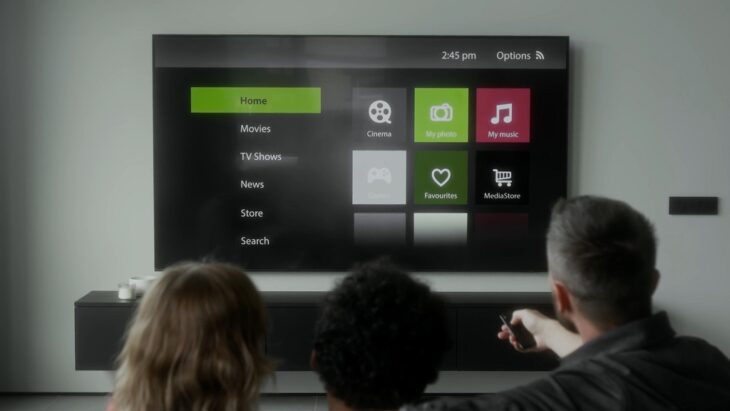
Who’s crushing it:
9. Content Diversification
Great examples:
10. Community Engagement
Where it shows up:
Why UI in Entertainment Apps Matters So Much
Supporting Data
Metric
Data
Mobile Content Use (2024)
98% of internet users access content via phones
Video Data Usage (2023)
73% of mobile data goes to video
India
81.67% of web traffic is mobile
China
99.9% of users access internet via phones
Africa
Mobile-first region with the highest mobile penetration
App Deletion
25% of users delete an app due to bad design
Microcopy Impact
Changing “Book a room” to “Check availability” increased conversions by 17%
Who’s Actually Doing It Right?
App
What They Nail
Netflix
Personalization, interactive stories, offline viewing
TikTok
Gamification, social virality, short-form crack-level content
Spotify
Seamless device integration, hyper-personalization, customization
Tencent Video
Bullet screens, VR exploration, innovative UI tricks
MUBI
Curation, niche community, minimalist design that doesn’t scream at you
ReelShort
Fast-paced vertical shows, built for modern attention spans
Final Thoughts
